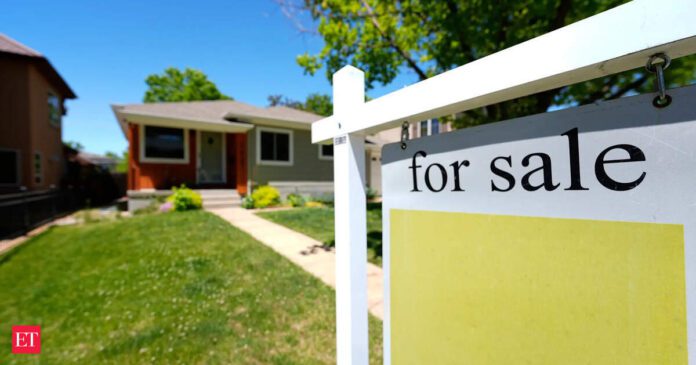Mortgage rates averaged 6.27% through Wednesday of this week, down from the 6.6%-6.7% range that persisted throughout spring 2025. The decline represents an 11-month low for borrowing costs.
“Mortgage rates have come down, but they’re still within range of where they’ve been since late 2023,” said Daryl Fairweather, chief economist at Redfin. “It really isn’t a huge motivator.”
Also read: Mortgage rates today dip again: Average 30-year fixed rate at 6.27% – is now the right time to buy a home?
The current rate environment has produced minimal impact on housing market dynamics. While affordability has improved marginally, the changes have proven insufficient to drive significant buyer engagement, particularly as home prices maintain upward momentum in numerous markets.
Home prices continue rising despite weakened buyer demand
A July analysis by Zillow determined that mortgage rates would need to reach 4.43% for a median-income family to afford a typical home in the United States. Current rates remain substantially above that threshold.
The housing market now reflects a stalemate between buyers and sellers. Prospective buyers appear to be waiting for additional rate decreases expected in spring 2026, while many sellers hold low mortgage rates from previous years and maintain flexibility to wait for higher offers or withdraw listings.
Contract cancellations reach highest level since 2017
Approximately 56,000 home sales, representing 15% of contracts signed in August, were subsequently canceled, according to Redfin data. This cancellation rate marks the highest figure for August since 2017.Traditional indicators of market distress, including contract cancellations and withdrawn listings, remain elevated across the country.
Regional housing market conditions show buyer power increasing
Real estate professionals across various markets report that buyers are gaining leverage as sales activity slows during the fall season.
In San Antonio, Texas, anticipated seasonal increases in homebuying have not occurred. Realtor Mark Stillings noted that while competitively priced homes sell quickly, other properties remain on the market for extended periods. Inventory has increased as buyer demand stays weak, with sellers competing against new construction homes offering builder-paid rate buydowns.
“The people who would like to purchase a home on a discretionary basis — they’re still playing wait and see,” Stillings said. “The people I see purchasing in this market are probably having some life event: They’ve got a promotion that makes them feel economically comfortable, there’s a divorce, or they need to get in a better school district.”
Northeast and Midwest markets experience price cuts and extended market times
In traditionally competitive Northeast and Midwest markets, buyers are acquiring additional negotiating power as available inventory rises. Price reductions are becoming more frequent, and properties are spending longer on the market in suburban Boston areas.
Morgan Guthrie, a real estate agent at Douglas Elliman Real Estate in Wellesley, Massachusetts, observed the shift in market dynamics.
“The market is trying to balance out a little bit,” Guthrie said. “There are buyers out there, but prices just aren’t where buyers want them yet, and sellers, I don’t think, are ready to make that jump.”
New listings rise while contract signings decline nationwide
Nationwide data shows new listings increased 4.1% in the four weeks ending October 12 compared to the previous year, according to Redfin. Contract signings moved in the opposite direction, declining 1.2% during the same period.
Abby Smith, who leads the Realize Team in Fairlawn, Ohio, reported that sales began strongly in early 2025. Low inventory and multiple-offer situations resulting in above-asking prices were common. However, market conditions changed dramatically around August, when activity decelerated sharply.
Since August, inventory has climbed steadily while buyer caution has increased.
Home price appreciation continues in key markets despite cooling activity
Northeast Ohio has experienced some of the fastest home price appreciation nationally, with median prices increasing approximately 4% in September compared to the previous year. These gains now appear to be constraining prospective buyers.
“Buyer affordability continues to get harder and harder,” Smith said.
Smith has begun discussions with buyers and sellers planning to enter the housing market in spring 2026. At some point, home prices are likely to stabilize, potentially creating opportunities for new buyers, particularly if inventory levels continue improving.
“There’s a lot of pent-up supply and demand going on here,” she said.

